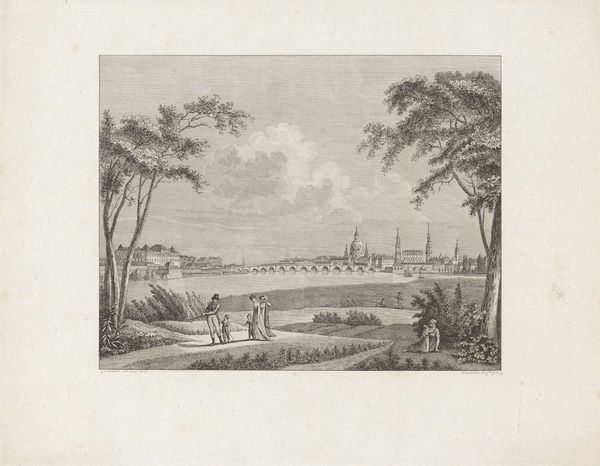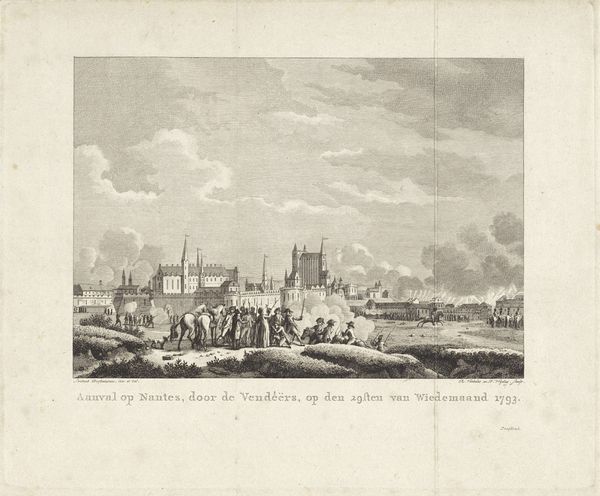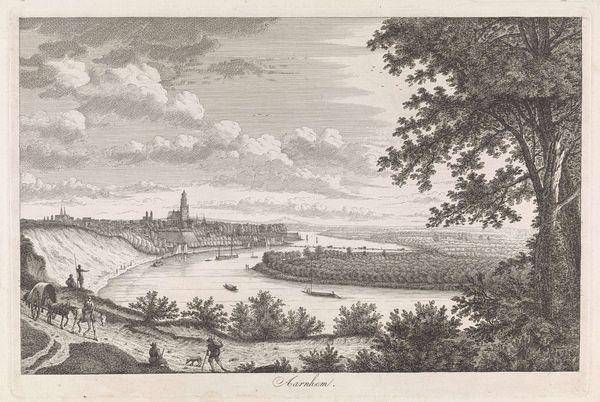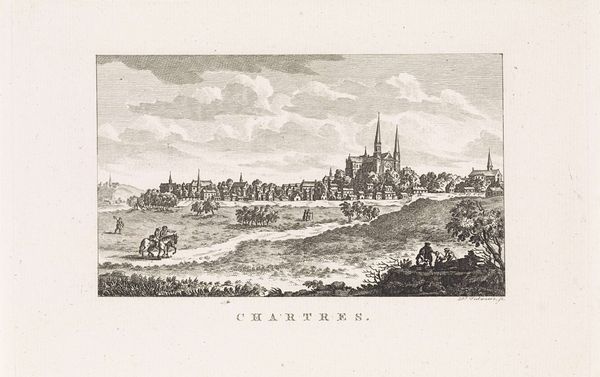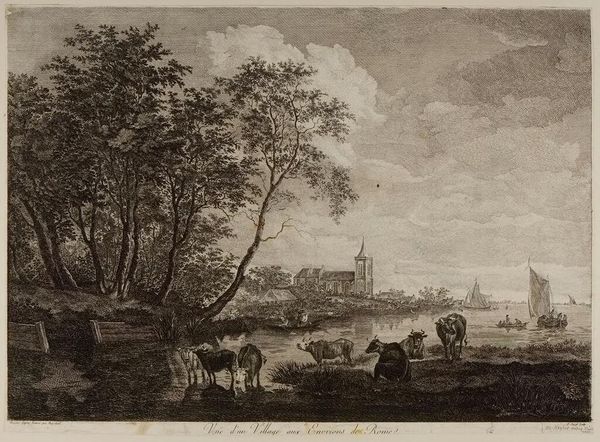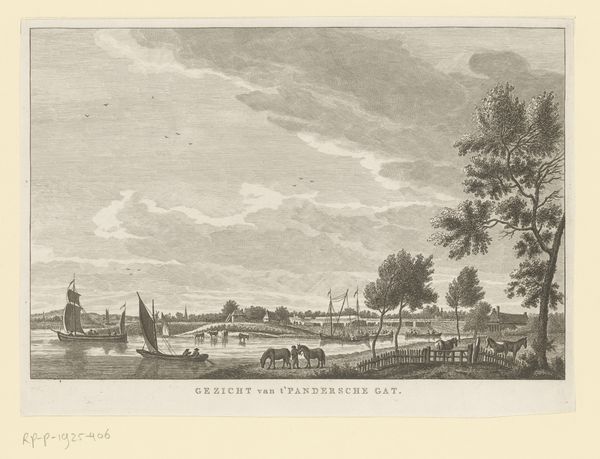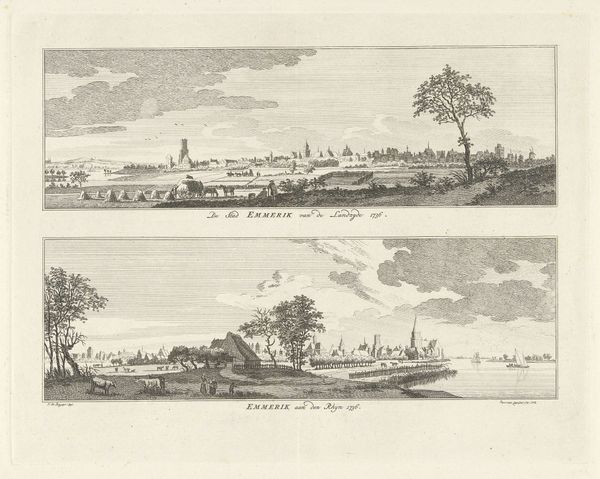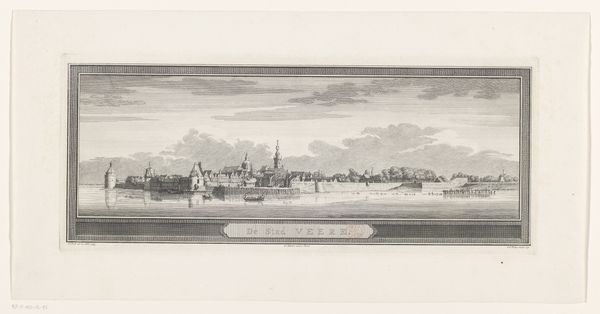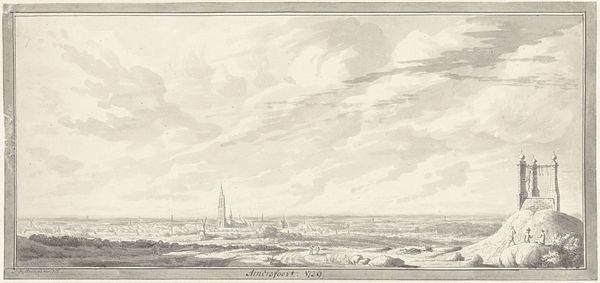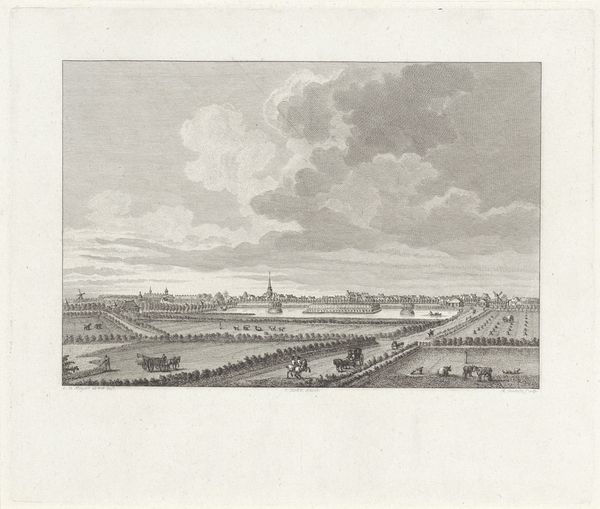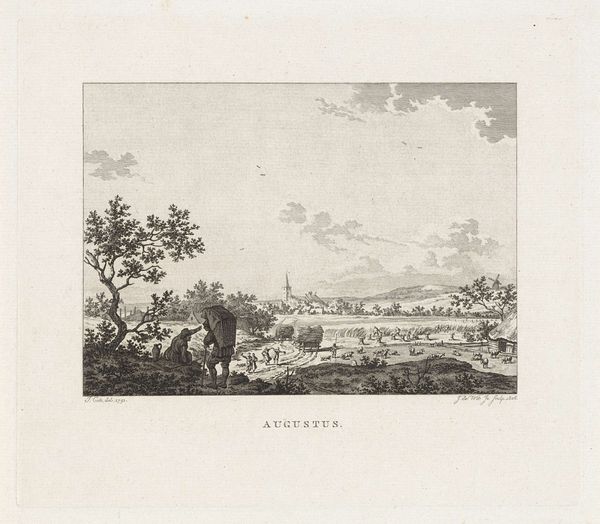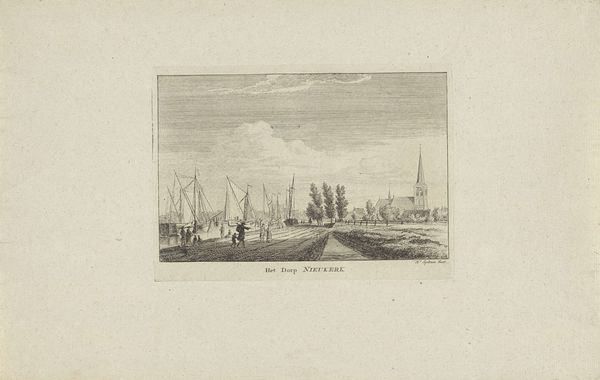
print, engraving
# print
#
landscape
#
romanticism
#
cityscape
#
engraving
#
realism
Dimensions: height 134 mm, width 193 mm
Copyright: Rijks Museum: Open Domain
Editor: So, this is "Gezicht op Dijon," or "View of Dijon," an engraving made by Hendrik Roosing sometime between 1786 and 1826. It's quite detailed, almost like a postcard. What do you find most striking about this view? Curator: What strikes me first is the calmness, the peacefulness that Roosing captures. The hazy light almost obscures the details of daily life, turning it all into a dream. Can you see how he uses soft, repeated strokes, almost meditative, to depict the water and the sky, blending the real with a sort of... longing? It reminds me of those days when you stare at a landscape, letting it wash over you and fill your spirit. Do you get that same sense? Editor: I do see that calmness. I suppose I was too focused on trying to follow the tiny streets in the city. But longing? I wouldn't have thought of that. Curator: It's subtle, perhaps. Look at the way the figures in the foreground are dwarfed by the city, yet they're also connected to it. And then that cliff, dominating the left side! They aren't just looking at Dijon; they're part of the feeling it evokes, of journeys both real and imagined. Or maybe I'm just projecting after too many years looking at old art... Editor: No, I see it now. The figures and that almost imposing cliff do frame the town. The perspective feels so human. So it’s like we're invited to dream about Dijon along with them, perhaps. Curator: Exactly! And that's the real magic. Roosing isn’t just showing us a city; he's offering us a feeling. Almost makes you want to hop on a horse and go explore it yourself, doesn't it? Editor: Definitely, a new city is always full of feelings and perspectives waiting to be uncovered.
Comments
No comments
Be the first to comment and join the conversation on the ultimate creative platform.
